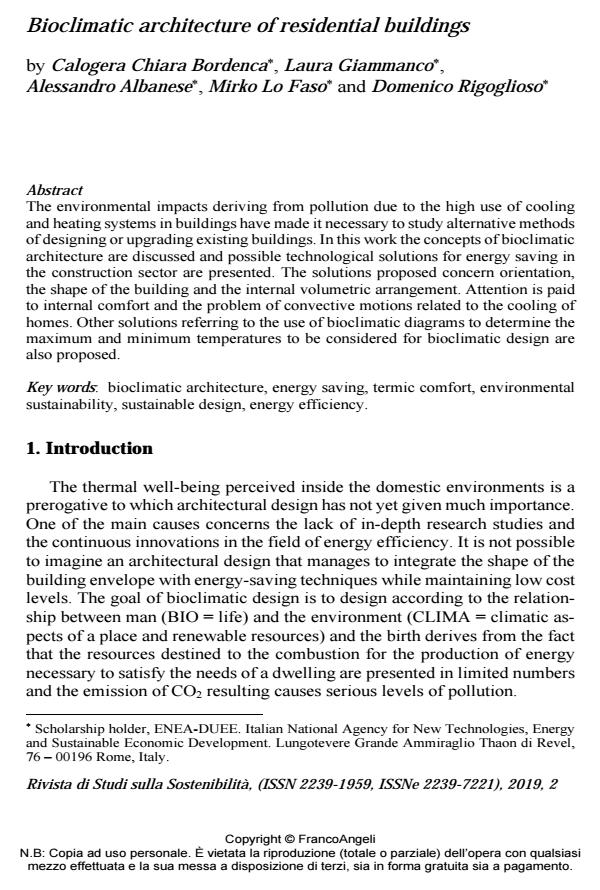Bioclimatic architecture of residential buildings
Titolo Rivista RIVISTA DI STUDI SULLA SOSTENIBILITA'
Autori/Curatori Calogera Chiara Bordenca, Laura Giammanco, Alessandro Albanese, Mirko Lo Faso, Domenico Rigoglioso
Anno di pubblicazione 2020 Fascicolo 2019/2 Suppl.
Lingua Inglese Numero pagine 16 P. 179-194 Dimensione file 505 KB
DOI 10.3280/RISS2019-002-S1012
Il DOI è il codice a barre della proprietà intellettuale: per saperne di più
clicca qui
Qui sotto puoi vedere in anteprima la prima pagina di questo articolo.
Se questo articolo ti interessa, lo puoi acquistare (e scaricare in formato pdf) seguendo le facili indicazioni per acquistare il download credit. Acquista Download Credits per scaricare questo Articolo in formato PDF

FrancoAngeli è membro della Publishers International Linking Association, Inc (PILA)associazione indipendente e non profit per facilitare (attraverso i servizi tecnologici implementati da CrossRef.org) l’accesso degli studiosi ai contenuti digitali nelle pubblicazioni professionali e scientifiche
The environmental impacts deriving from pollution due to the high use of cooling and heating systems in buildings have made it necessary to study alternative methods of designing or upgrading existing buildings. In this work the concepts of bioclimatic architecture are discussed and possible technological solutions for energy saving in the construction sector are presented. The solutions proposed concern orientation, the shape of the building and the internal volumetric arrangement. Attention is paid to internal comfort and the problem of convective motions related to the cooling of homes. Other solutions referring to the use of bioclimatic diagrams to determine the maximum and minimum temperatures to be considered for bioclimatic design are also proposed.
Parole chiave:Bioclimatic architecture, energy saving, termic comfort, environmental sustainability, sustainable design, energy efficiency.
Calogera Chiara Bordenca, Laura Giammanco, Alessandro Albanese, Mirko Lo Faso, Domenico Rigoglioso, Bioclimatic architecture of residential buildings in "RIVISTA DI STUDI SULLA SOSTENIBILITA'" 2 Suppl./2019, pp 179-194, DOI: 10.3280/RISS2019-002-S1012